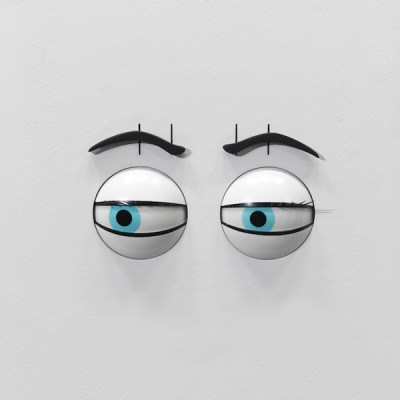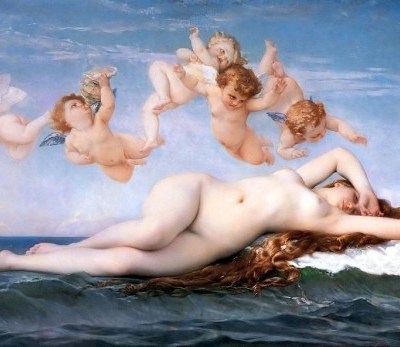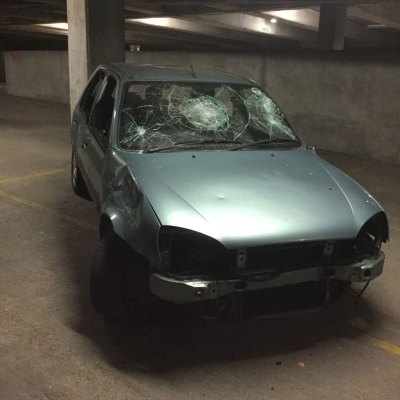Contemporary art’s embrace of ‘time-based media’, such as sound and moving image, poses a stark challenge for traditional museum and gallery spaces, which predate such technologies and were designed for a very different kind of experience. Seemingly mundane questions about display, such as how to prevent sound and light contamination, point to audio-visual art’s distinct nature. It resists the usual exhibiting strategies of bringing together different works through pairings or juxtapositions, and demands instead a discrete space in which to immerse the visitor in its own world. The ‘white cube’ is transformed into the ‘black box’.
The vast complex of The Store, a new creative space on London’s Strand, provides the perfect setting for ‘The Infinite Mix’, an ambitious survey of sound and moving image in contemporary art; curated by Hayward Gallery director Ralph Rugoff, this is the gallery’s main off-site exhibition during its two-year refurbishment. The exhibition spans four levels of the imposing Brutalist building and presents us with ten expansive black boxes – referred to here as ‘studios’. Each of these studios delivers ideal conditions to encounter audio-visual works, shown for the first time in the UK, by leading international artists including Martin Creed, Elizabeth Price and Dominique Gonzalez-Foerster.
m.A.A.d (film still), 2014, Kahlil Joseph. Photo: Chayse Irvin; courtesy of the artist
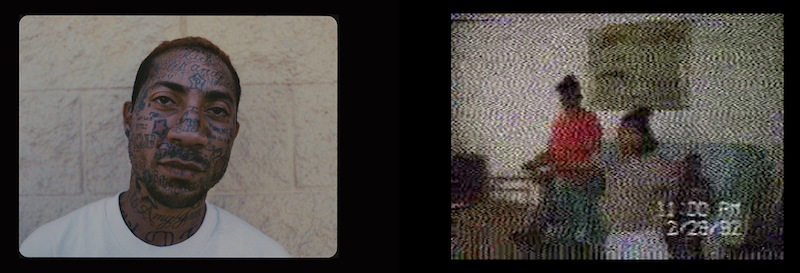
We grope our way through pitch-black corridors, trying to avoid collision, emerging to find a seat or floor space in spare, darkened, sound-proofed rooms equipped with hi-tech speakers (or, on one occasion, headphones). The experience is an exciting fusion of the immersive properties of cinema and music – both of which are capable of transporting viewers and listeners to another time and space. The interdisciplinary nature (the ‘infinite mix’) of the works in this exhibition celebrates a culture in which artists are restlessly exploring the possibilities of new technologies, mixing materials and crossing genres. Kahlil Joseph’s installation, m.A.A.d. (2014), remixes a 2012 album by American rapper Kendrick Lamar and sets it as the soundtrack to a dual-screen film that combines newly-shot, inherited and found news footage depicting the Los Angeles neighbourhood of Compton, powerfully conveying the everyday threat of gun violence within the community. The work is equal parts music video, choreographed performance, documentary film and sculptural installation. Like other artists whose work is on show here, Joseph is familiar with contexts outside the traditional art world; he has directed several music videos and recently came to public attention for his contributions to Beyoncé’s 2016 ‘visual album’ Lemonade.
Nightlife (film still), 2015, Cyprien Gaillard. Courtesy the artist and Sprüth Magers; © Cyprien Gaillard

Underpinning many of the works in ‘The Infinite Mix’ is a thoughtful consideration of how technology mediates our experience of the world. Whether carried to the streets of Compton, L.A., entranced by Gonzalez-Foerster’s ghostly holograph of the legendary opera singer Maria Callas, or feeling that we are floating through the sky in Cyprien Gaillard’s three-dimensional Nightlife (2015), we are reminded of the emotional, transportational power of sound and image. In this sense, while often derided as superficial or merely entertaining (as if art must either make us think or feel, but never both), audio-visual art here takes its place in a venerable tradition stretching back to the Renaissance discovery of linear perspective as a way of immersing the viewer in the painting’s reality.
THANX 4 NOTHING (film installation), 2015, Ugo Rondinone. Image courtesy the artist; Galerie Eva Presenhuber; © Ugo Rondinone
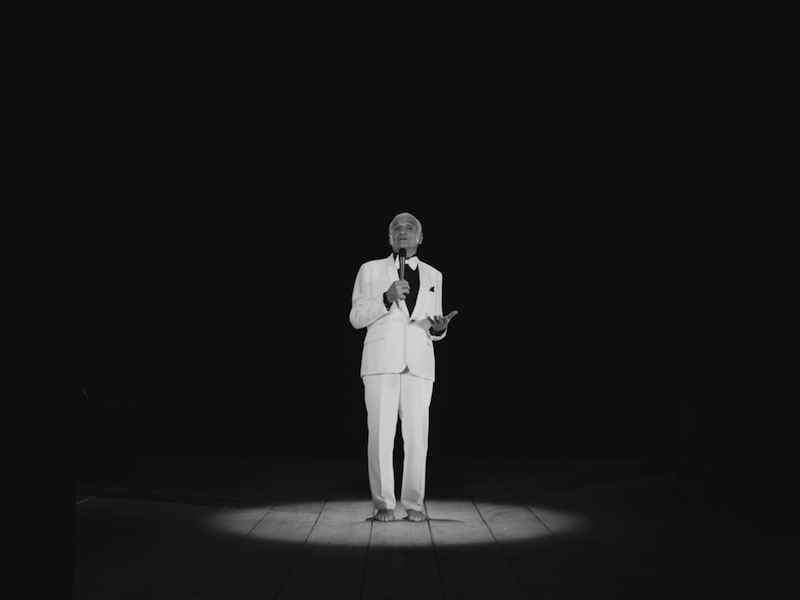
I was slightly disappointed to find that – with the exception of Ugo Rondinone’s beautiful THANX 4 NOTHING (2015), composed of four wall projections and 16 monitors dissecting John Giorno’s hilarious yet moving performance of his poem of the same name – few spaces experimented with the presentation of audio-visual art through installation. Although Gaillard’s three-dimensional visuals provide a climactic conclusion to the exhibition, no works really explore the more unusual possibilities of sound technology: Janet Cardiff and George Bures Miller’s video installations using Binaural audio recording to create the sensation of three-dimensional sound would have been a welcome addition.
Everything and More (film still), 2015, Rachel Rose. Courtesy of the artist and Pilar Corrias Gallery, London and Gavin Brown’s enterprise, New York; © Rachel Rose
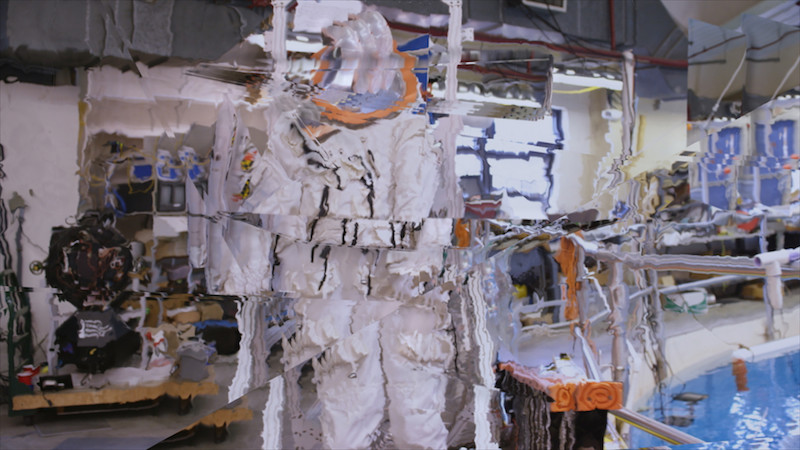
Nonetheless, what the works here do reveal is that, despite the difficulty of exhibiting film and sound so as to allow each work to command our full attention, it’s worth the challenge. In Rachel Rose’s Everything and More (2015), we hear an astronaut describe the disorientating experience of returning to Earth from space: ‘Your sensitivities are so increased because they’ve been absent for so many months…It’s hard to walk straight…It makes it hard to navigate; as you turn into doorways, you tend to swing wide.’ Our experience of Rose’s work, which is constructed of layers of footage projected onto a fabric screen set against a window (is the view of the city beyond real or illusory?), has a similarly powerful sensorial effect. So too does the entire experience of ‘The Infinite Mix’, as we briefly return to Earth in our passage from studio to studio.
Installation view of Everything and More, 2015, by Rachel Rose, ‘The Infinite Mix’, the Store, 180 The Strand
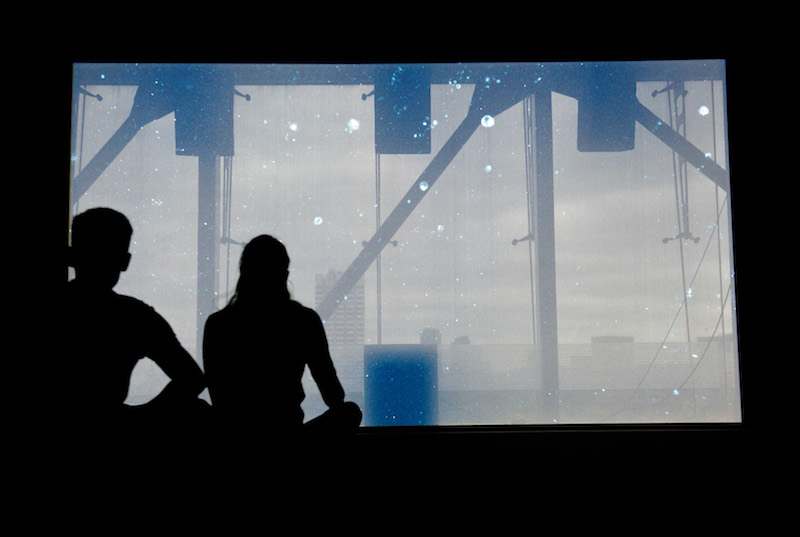
‘The Infinite Mix’ is at The Store, 180 The Strand, until 4 December.

